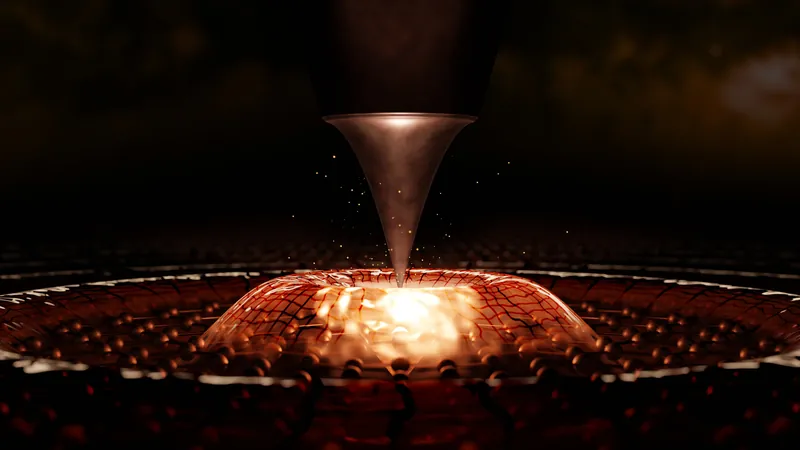
Groundbreaking Discovery: Scientists Master Ultrafast Surface Waves on Graphene!
2025-01-16
Author: Yu
Groundbreaking Discovery
In an exciting breakthrough, researchers at the University of Regensburg have successfully observed and manipulated ultrafast surface waves on graphene, a wonder material composed of a single layer of carbon atoms. Collaborating with experts from Milan and Pisa, they likened their discovery to throwing a stone into a calm lake, witnessing ripples in an 'electron sea' instead of water. Their findings, published in the prestigious journal *Nano Letters*, have profound implications for future technologies in electronics.
Significance of Graphene
Graphene, renowned for its extraordinary electrical and thermal conductivity, serves as an ideal medium for this research. The team utilized one of the fastest slow-motion cameras known on the nanoscale to visualize this electron wave phenomenon. Rather than a stone disturbing the water, they employed laser pulses directed at a sharp metallic tip hovering just above the graphene's surface.
Technical Explanation
"The interaction from the focused light initiates motion within the electrons at the tip, driving them to create circular waves of electron density," explained Simon Anglhuber from the Institute of Experimental and Applied Physics at the University of Regensburg. These generated waves travel through the graphene, reflecting off its edges and returning back to the tip, where they can be detected by converting the electron oscillations back into light.
Resolution and Precision
What sets this impressive technology apart is its resolution capability—at the nanometer level for spatial observation and in the femtosecond range for temporal observation, akin to a camera capturing over 10 trillion frames per second! This ultra-high precision enables the researchers to analyze wave characteristics such as speed, frequency, and damping with remarkable accuracy, without the need for complex computational methods.
Variations in Propagation
In their experiments, the scientists discovered that by varying the production methods of graphene samples, they could observe significant differences in the propagation of electron waves. This vital information is expected to enhance the development of high-quality graphene samples, ultimately improving optoelectronic devices like ultra-sensitive light sensors.
Real-time Manipulation
Further extending their work, the researchers demonstrated the ability to manipulate the electron waves in real-time using additional laser pulses to disrupt the electron sea. This groundbreaking capability not only deepens the understanding of the material properties but also provides a pathway to engineer new electronic components that operate at speeds exponentially faster than current technologies.
Implications for the Future
The implications of these findings are immense. As electronics continue to demand faster speeds and greater efficiency, harnessing and controlling ultrafast surface waves on graphene could lead to revolutionary advancements, paving the way for the next generation of electronic devices, systems, and technologies that redefine our grasp on speed and performance.
Conclusion
Stay tuned, as this research could mark the dawn of a new era in electronics—could we be on the brink of 1000x faster devices? Only time, and further research, will tell!



 Brasil (PT)
Brasil (PT)
 Canada (EN)
Canada (EN)
 Chile (ES)
Chile (ES)
 Česko (CS)
Česko (CS)
 대한민국 (KO)
대한민국 (KO)
 España (ES)
España (ES)
 France (FR)
France (FR)
 Hong Kong (EN)
Hong Kong (EN)
 Italia (IT)
Italia (IT)
 日本 (JA)
日本 (JA)
 Magyarország (HU)
Magyarország (HU)
 Norge (NO)
Norge (NO)
 Polska (PL)
Polska (PL)
 Schweiz (DE)
Schweiz (DE)
 Singapore (EN)
Singapore (EN)
 Sverige (SV)
Sverige (SV)
 Suomi (FI)
Suomi (FI)
 Türkiye (TR)
Türkiye (TR)
 الإمارات العربية المتحدة (AR)
الإمارات العربية المتحدة (AR)